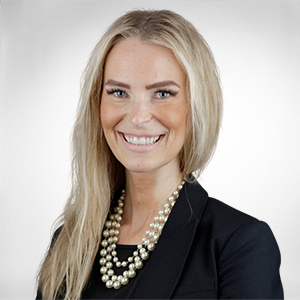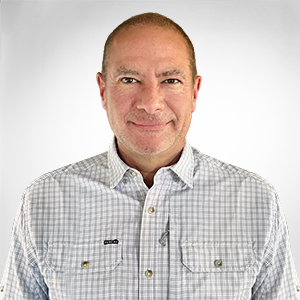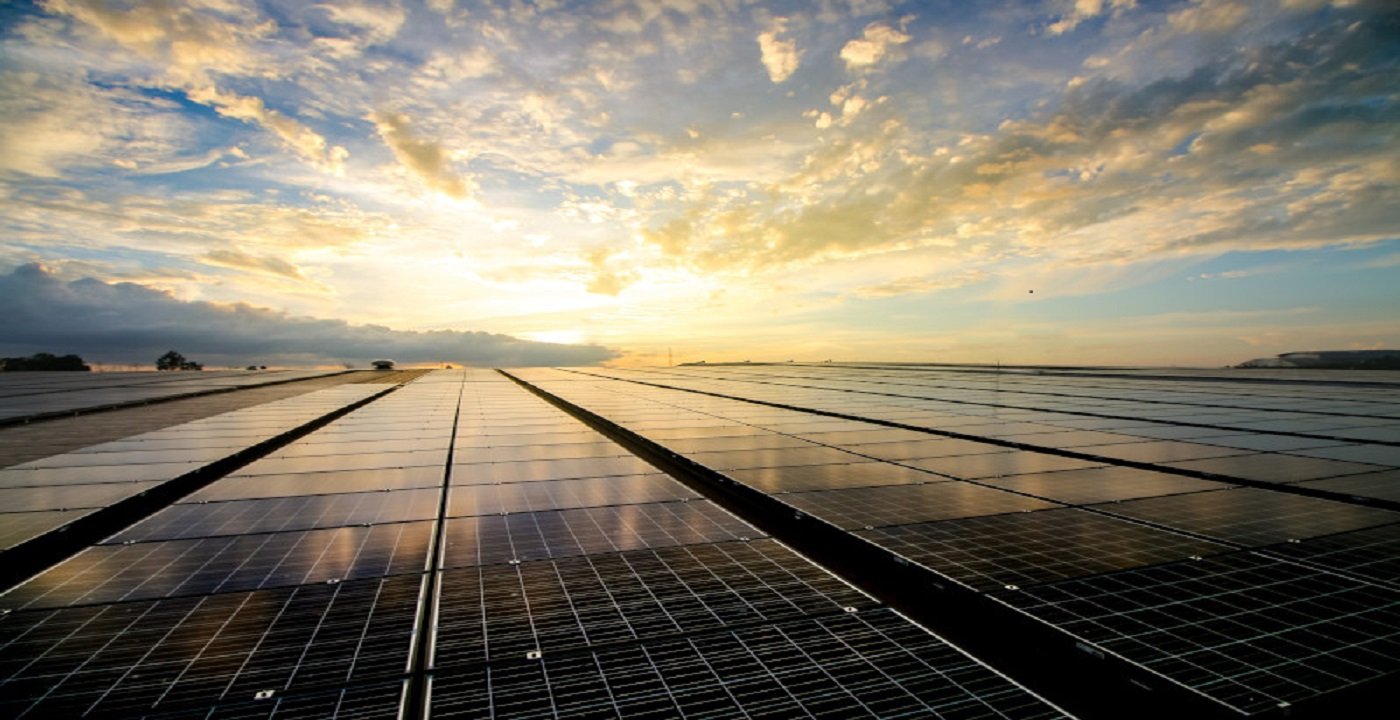Zurich's work with energy firms on sustainability
Climate and EnergyArticleAugust 11, 2023
Every day, Zurich North America’s Energy team sees the evolution of the clean energy transition as customers take innovative approaches to power generation, energy use and operational carbon reductions. While new approaches come with unknowns, one thing is certain: Zurich is committed to helping energy companies on their sustainability journey.
Zurich’s Energy team formed a practice around Renewable Energy to support customers in managing sustainability-related risks and investing in renewable technologies. Zurich Resilience Solutions (ZRS) has introduced over a dozen sustainability-oriented services. Zurich also has created an Office of Sustainability Underwriting.
While no one can flip a switch and solve the planet’s clean energy challenges overnight, Zurich teams are collaborating to help companies with their wide-ranging sustainability goals. We asked Molly Dorsett, Head of U.S. Energy Casualty Power and Renewables for Zurich North America, and Jeff Melo, Senior Risk Engineering Consultant for Energy & Renewables with ZRS, to share a few observations of the energy industry’s efforts.

Q: How are traditional energy companies approaching sustainability?
Dorsett: Across the energy industry, our customers have been prioritizing responsible management of their environmental and climate impact, many of them for years. Incrementally it has become a bigger focus, in part because investors and lenders want to know how companies are tackling climate responsibility. It’s one reason Zurich’s Energy portfolio has grown to include new renewable technologies.
Progress on sustainability is twofold, from both traditional energy companies and newer ones focused on renewable energy. Within our renewable energy portfolio, we are proud to have a meaningful number of global clients who have recently made significant investments in the U.S. They are bringing newer but proven power-producing technologies and expertise to projects that our energy business is able to support in various ways, in part because we’ve been supporting the energy industry for so many years. This is a really exciting time.
 Melo: In the energy industry you have what are called the supermajors — the largest multinational energy companies — then the majors, the independents and the small operators. Across the oil and gas industry, but especially with the supermajors, investment in renewables has been steadily growing over the years. Often the majors and supermajors are forming joint ventures or contracting with an established renewable energy developer or operator that specializes in clean power generation from solar and wind. It’s also very common for midstream pipeline operators to supplement their operational assets with renewable energy sources.
Melo: In the energy industry you have what are called the supermajors — the largest multinational energy companies — then the majors, the independents and the small operators. Across the oil and gas industry, but especially with the supermajors, investment in renewables has been steadily growing over the years. Often the majors and supermajors are forming joint ventures or contracting with an established renewable energy developer or operator that specializes in clean power generation from solar and wind. It’s also very common for midstream pipeline operators to supplement their operational assets with renewable energy sources.
There are numerous drivers for such activity. For some, renewables help offset their operational carbon footprint. For others it is stakeholder alignment. And for many, it is tied to their environmental, social and governance objectives (ESG). Or it could be a combination of all these drivers. An example can be found in the oilfield services area; well-stimulation companies are starting to run their rig and pump fleets off natural gas found right at the well site, or nearby. Others have converted their diesel pump fleet to electric. There are many interesting and forward-thinking ways companies are working to reduce emissions. At Zurich Resilience Solutions, we strive to stay abreast of these conversions and changes, as they also change the operational risk profile. We call this transitional risk.
Q: How are energy and insurance companies working through some of the challenges associated with new renewable energy ventures?
Dorsett: Oil and gas company exposures have a long data history that we understand well. But even their risk profile is changing with the addition of renewables into their business. One example is a pipeline company that is moving into renewables and carbon capture in Texas.
And while wind power isn’t new, offshore wind farms are a relatively new frontier stateside, with some unique exposures related to things like the very expensive cables that run underwater to land. The risk exposures in some cases may include snagging by anchors and kinking that can impair functioning. We need to look at how these cables are being protected against some of the risks.
Some risks associated with these new technologies are unique in several respects. But they are similar in others to traditional energy production like offshore oil and gas platforms, of which there are many. By some estimates, about 3,500 platforms stand in the Gulf of Mexico alone, with hundreds of thousands of miles of pipeline running between water and land.
Melo: Staying abreast of renewable and sustainable developments and technologies is essential. So is collaboration between the industry, the carrier, the broker channel and Risk Engineering. At Zurich we view ongoing education in this area as critical and we regularly offer sessions featuring internal and guest speakers.
In our Houston office, Zurich Resilience Solutions’ Risk Engineering recently hosted a “green hydrogen” learning session, teaming with the Renewable Hydrogen Alliance to advance our internal knowledge in this area. Hydrogen, and in particular “green” hydrogen, has a lot of attention right now and might be a substantial transportation fuel in the future. Green hydrogen gets its name from being produced using electricity generated through renewable sources, such as wind or solar. As with other emerging clean technologies, we at Zurich want to ensure we’re positioned to understand green hydrogen and its marketplace potential, including the current and future risk profiles, in order to assist new and existing clients.
Assistance can take many forms, from developing our risk appetite, capacity and internal expertise to placing clients in the right protective coverage and understanding their business at a level to provide meaningful support toward risk reduction and performance improvements in health, safety and sustainability processes.
Q: What are some challenges related to bringing new energy sources to the power grid?
Dorsett: Additional infrastructure projects are needed for renewable energy enablement. One of the more well-known examples is electric vehicle charging stations. Another is transmission lines to connect remote wind and solar farms to the grid. Another challenge is to maximize renewable energy input to the grid while providing a reliable energy backstop. The industry also needs to work together on recycling and reuse of materials such as wind blades and developing technologies that are not dependent on minerals in fragile environments, which is an issue with some battery technologies. We’ll continue to work with our customers and broker partners on solutions.
Melo: There are most certainly challenges when it comes to developing the offshore wind power grid, which is new to the U.S. but well established in Europe. One of the first large-scale offshore wind farm developments in the U.S. is in full swing, and Zurich is a part of that energy project “first.” Zurich was selected to provide some of the casualty coverage and risk mitigation support on this high-profile renewable project. It’s exciting to be at the forefront and to be part of a practice that can offer the flexibility, technical engineering support and creativity needed for a project of this scale.
Q: Some renewable technologies can present their own environmental and social risks. How does Zurich approach these?
Dorsett: Some green energy requires battery storage due to the intermittency of renewable energy sources, and batteries depend on minerals that are sometimes extracted in fragile environments and in ways that can raise ESG concerns. Offshore wind, meanwhile, may pose potential environmental impacts to wildlife, sea life and the fishing industry. Zurich is working both within our own operations and in how we support our customers to continue to move forward to promote the best science-based outcomes for the environment. We expect the landscape and technology to continue to evolve quickly. Things will look different with each decade.
Q: Besides providing insurance, what is Zurich doing to help energy companies in the transition?
Melo: Many of our energy customers, both traditional and renewable, are very interested in Zurich Risk Solutions in terms of our expanding Risk Engineering and strategic advisory capabilities, specifically in the area of climate and sustainability. In addition to our longstanding health, safety and environmental consulting services, ZRS’ sustainability and climate consulting practice is actively providing newer services such as baseline carbon footprint analysis, coupled with assisting clients with operational and product-based strategies on reducing that footprint over time. Our extensive history in the traditional oil and gas industry and our emerging leadership position in the renewables marketplace enable us to share a wide range of best practices, lessons learned and success stories with clients looking to get started or advance an existing renewables asset transition.
Q: How does Zurich support an energy industry that is fast evolving?
Dorsett: There’s not a one-size-fits-all in terms of energy technology or strategy. We’re able to provide holistic risk management support to independent producers of renewable energy and adjacent businesses. Equally important, we continue to support our traditional client base as these clients find opportunities to reduce their carbon footprint and maximize their climate initiatives. As our energy customers move into climate-friendly technologies, transitioning with them in real time is a win-win. We will keep moving forward together.
The information in this publication was compiled from sources believed to be reliable for informational purposes only. All sample policies and procedures herein should serve as a guideline, which you can use to create your own policies and procedures. We trust that you will customize these samples to reflect your own operations and believe that these samples may serve as a helpful platform for this endeavor. Any and all information contained herein is not intended to constitute advice (particularly not legal advice). Accordingly, persons requiring advice should consult independent advisors when developing programs and policies. We do not guarantee the accuracy of this information or any results and further assume no liability in connection with this publication and sample policies and procedures, including any information, methods or safety suggestions contained herein. We undertake no obligation to publicly update or revise any of this information, whether to reflect new information, future developments, events or circumstances or otherwise. Moreover, Zurich reminds you that this cannot be assumed to contain every acceptable safety and compliance procedure or that additional procedures might not be appropriate under the circumstances. The subject matter of this publication is not tied to any specific insurance product nor will adopting these policies and procedures ensure coverage under any insurance policy. Insurance coverages underwritten by individual member companies of Zurich in North America, including Zurich American Insurance Company. Certain coverages not available in all states. Some coverages may be written on a nonadmitted basis through licensed surplus lines brokers. Risk engineering services are provided by The Zurich Services Corporation.
